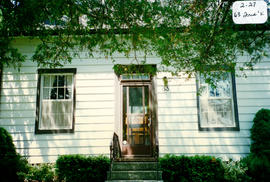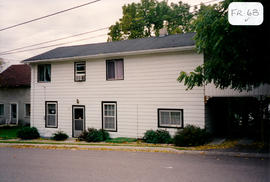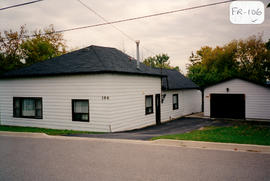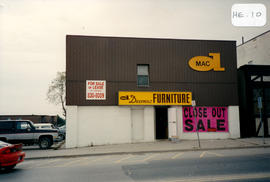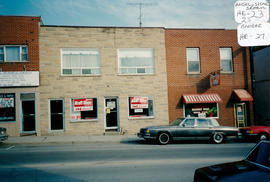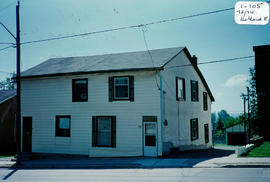63 Frederick Street - The Dougald MacDonald House
- CA BWGPL GJ-HB-2017-03-21-10-2017-03-21-11
- Parte
- 1996
Parte de George Jackson fonds
The Dougald MacDonald House is located mid-block at 63 Frederick Street. The house was built pre-1900 (around 1882) in the Ontario Vernacular Cottage style. It was built by George (Geordy) MacDonald, a bachelor, stone mason, and contractor who emigrated from Scotland at the age of 27. He was responsible for building homes and schools in this community, as well as the first Presbyterian Church in Bradford that once stood on John Street. The one-storey, three-bay cottage has a square plan with a centre hall. A box hall was typical for this style. The house has a symmetrical façade and a simple, gable roof. The grade-level entrance has a single entrance door with a rectangular, glazed transom. The large, 8/8, double-hung windows have plain, wood trim and sills. The house has wood frame construction covered with aluminum siding. According to the 2000 inventory, the original siding was probably wood. It also notes that the building was largely obscured by trees and that it probably had few decorative details originally. A photo (and brief article about the renovations) in Century Home Magazine (April 2002, page 18) reveals that the two cedar trees in the front yard have been removed and that a porch has been added at the front of the house. (1, 2, 3, 5, Century Home Magazine)
Sem título

